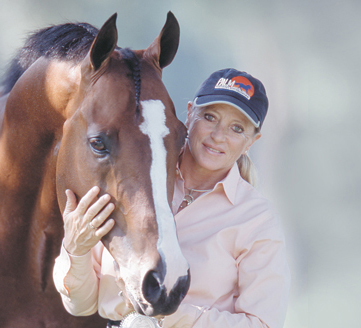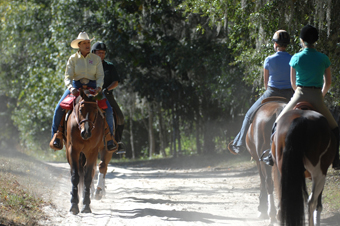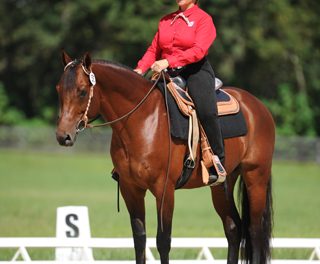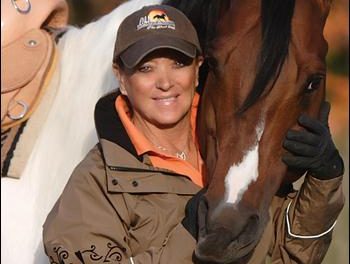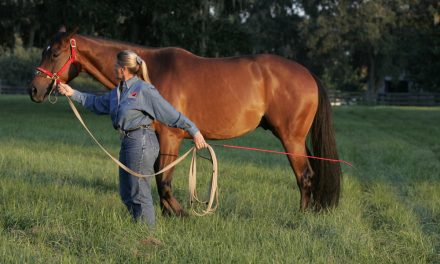Palm Partnership Training™
Building a Partnership with Your Horse
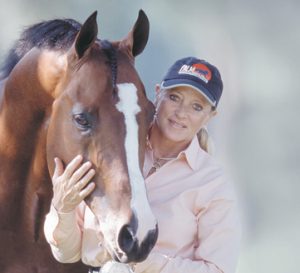 I want to explain the importance of the turning aids and give you some exercises to practice to more effectively use them. This information may be a revelation. It will help improve your transitions and may change your riding forever!
I want to explain the importance of the turning aids and give you some exercises to practice to more effectively use them. This information may be a revelation. It will help improve your transitions and may change your riding forever!
Turning or “bending” aids include our hands through the reins and our legs. We use these aids to control the horse’s direction of travel and his body position. The term “bending” may be unfamiliar to some readers. When the bend through the horse’s side is correct, his body conforms the arc of whatever curved line he is on. If a horse is bent properly on a circle, we say he is “straight” because he is properly following the arc of the circle. His hind feet follow in the tracks of the forelegs on a curve. To do this he must bend.
The primary aids to turn or bend a horse are the rider’s outside leg and outside rein. The “outside” is the side of the horse opposite from the direction of the turn. For example, if I want to turn my horse in a circle to the left, I turn him using my outside aids—the right leg and right rein. The job of my inside (left) leg is to keep the horse forward and out on the turn. My inside (left) rein is used to lightly position my horse’s head so he is looking in the direction of the turn. Let’s look at the function of each aid in turning or bending a horse:
Outside Rein: Functions as the turning rein. It asks the horse to move his shoulders to follow the arc of the circle or turn. When using the outside rein, be careful not to move the outside hand over the crest of the horse’s neck.
Outside Leg: Is positioned slightly behind the girth. It helps to bend the horse’s body around the inside leg and keeps his hindquarters from swinging out and off the arc of the circle or turn.
Inside Rein: Lightly positions the horse’s head in the direction of the turn. Do this by slightly rotate the inside hand as if “turning a key” or “opening a doorknob” and slightly opening the rein in the direction of the turn to position the head.
Inside Leg: Positioned at the girth. Helps keep forward momentum and, as my friend and Olympic rider Jane Savoie describes in her wonderful book Cross Train Your Horse; “the inside leg serves as a pole for the horse to bend around.”
Now that you have a better idea of how the turning/bending aids are used, here’s an exercise to practice applying them. I’ll walk you though it, describing the use of each aid.
Figure 8’s — Circles with Change of Direction at the Walk
The goal of this exercise is to complete 2 equal sized, medium sized, round circles at the walk in a “figure 8” pattern. Start by asking the horse to walk forward. Begin turning him on the first circle to the left. To follow the circle, turn the horse using the right rein against his neck, holding the right leg slightly behind the girth. The inside leg is active and keeps him moving forward as he bends around it. “Turn the key” and slightly open the left inside rein to lightly position the horse’s head so he is looking in the direction he is turning.
As you complete the circle to the left, prepare to reverse directions across the middle of the imaginary “figure 8”. Straighten the horse for a few steps while crossing the middle of the “8”. Prepare to change the horse’s body position to ready him for a circle to the right. Start the turn by applying the left leg and left rein while keeping him forward using the right leg. Lightly position his head to the right using the inside (right) rein.
Practice this exercise, then add some challenge by asking the horse to make tighter circles within the figure 8 pattern. Remember the same principles apply: outside rein-outside leg to turn. Maintain the inside leg to keep him forward (so he doesn’t stall in the tighter turn) and lightly position his head with the inside rein to keep in looking in the direction he is turning.
Your Next Step…
Once you feel that you are solid on understanding the role of the turning/bending aids, pick up the pace and try this week’s “figure 8” exercise at the trot. The increased speed of the trot will challenge you to apply your aids properly. Here’s how to do it.
Ask your horse to pick up a trot and start with a turn to the right. Begin turning to the right using your left leg and left rein. Use your inside right leg to keep horse’s forward movement at the trot, while the right hand lightly positions his head so he is looking to the right as he is bending and turning in that direction. As you approach the middle of the “8”, prepare to change direction to a circle to the left. Straighten the horse as you cross the middle, then apply the bending aids to the left. Apply the left leg to keep the forward momentum, lightly position his head in the new direction, and use the right rein and right leg to turn.
Now that you have a better understanding of the turning/bending aids, next week I’ll give you some exercises to help teach your horse how to make transitions to the lope/canter or improve them. These exercises use a modified “figure 8” pattern. That is why it is important to perfect your turning/bending aids first and know how to control you horse’s body so it is straight on a line or on a curve. When the horse is straight and his body in the proper position, he will be able to make his transitions properly.
Lynn’s Training Tip…
My goal is to teach you how to use natural aids, not artificial equipment or devices, to control a horse’s body. These aids are not hard for either horse or rider to understand. The challenge is coordinating them with the horse’s action to get the response you want. Teaching your horse to respond to these aids will open up a new level of communication between you! Start “talking” to your horse today.

